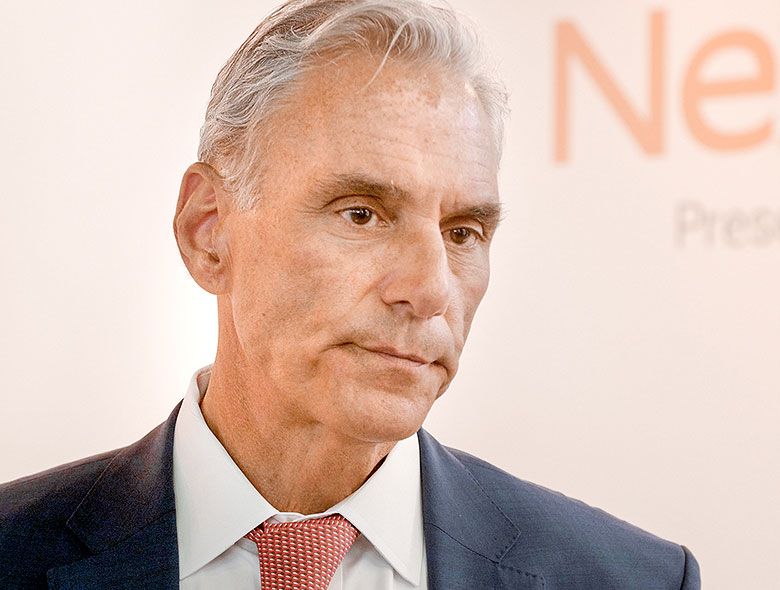The symposium was chaired by Prof. Dr. med. Roland Goldbrunner from Uniklinikum Köln and also heard presentations by nTMS pioneers, PD Dr. med. Thomas Picht from The Charité – Universitätsmedizin Berlin and Oberarzt PD Dr. med. Sandro Krieg, MBA from Klinikum rechts der Isar, Technische Universität München.
Dr. Berger highlighted the clinical successes his team at USCF has had using nTMS. After first showing that nTMS was safe and accurate compared to direct cortical stimulation for motor mapping, his team widened their application of nTMS to language mapping and using nTMS results with DTI to challenge whether or not visualized tracts are functionally related.
Dr. Berger on the value of nTMS to both patients and surgeons
Dr. Berger told the audience that he now uses nTMS routinely prior to resections and emphasized the clinical value of nTMS mapping to both patients and the surgeons at UCSF. He says patients really appreciate having nTMS mapping before their operation and seeing the information nTMS offers—"They love to see where the function is in the brain before the operation”, he says. Dr. Berger adds that he believes that seeing the nTMS results gives his patients confidence in him going in to do the surgery on their brain.
Nexstim at DGNC 2018
In the beginning of June, Nexstim was in the 2018 DGNC Kongress in Münster. Our lunchsymposium was a great success and attracted a large audience to listen our experts discussing the latest developments in the field of Navigated Brain Stimulation (NBS) and how it can improve treatment of Brain Tumor Patients.
Dr. Berger on using nTMS for detecting functional plasticity
In patients with low-grade gliomas, it is not always possible to achieve gross total resection, as some of the tumor can have function. Knowing they still have tumor in the brain, patients are understandably keen to know how if a reoperation is possible and how long they need to wait. Dr. Berger says that in his experience, function moves out of the tumor into the surrounding tissues 40% of the time—allowing for successful reoperation. But, he adds, this is very difficult to predict and ascertain from just MRI scans. Here, Dr. Berger believes nTMS can be real game-changer in neurosurgery because, for the first time, neurosurgeons can now study the migration of muscle groups non-invasively and in real-time—and identify the optimal timing for repeat resection.
Final words from Dr. Berger on nTMS
“Overall, I am very impressed with nTMS and I am not an easy person to be convinced,” says Dr. Berger. He concluded his talk by stating, “If we can utilize this information from nTMS to help us understand about plasticity, the change in location of function, then that’s going to be magnificent!”
Note
In his introduction Dr. Berger reminded the audience on his objectivity as a symposium speaker – he is not a paid consultant to Nexstim Plc. and receives no financial benefit from his participation in the DGNC lunch symposium.

